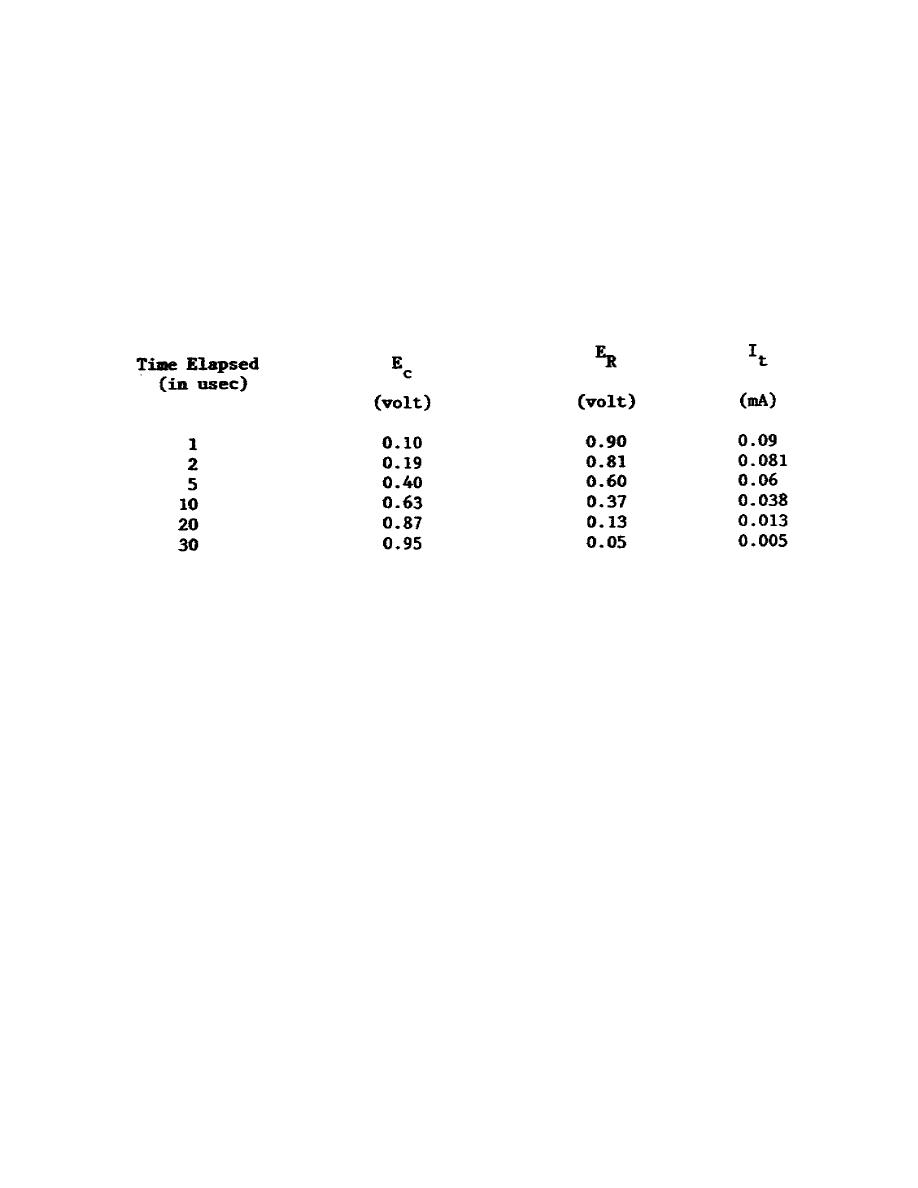
applied voltage at the end of this time. At the instant E is
applied, t and Ec are equal to zero; current and ER equal 100 percent
of their maximum values. When t is 1 usec, onetenth of 1 time
constant has elapsed. At this time, Ec is equal to 10 percent of the
applied voltage or 0.1 volt, ER, is equal to 90 percent of the
applied voltage or 0.9 volt, and It is equal to 90 percent of its
maximum value or 0.09 mA. The values of Ec, ER, and It in Table III
are obtained from the universal time constant chart.
Table III. Voltage and current values when a positive DC
is applied to a series RC circuit
c. After 70 usec, 7 time constants have elapsed. Ec then is
equal to 1 volt, and ER and It are equal to zero. The approximate
current flowing in any series RC circuit and the voltage across the
components in the circuit can be determined by substituting the
appropriate values of E, R, and C in the circuit.
13.
STEPBYSTEP PROCEDURE FOR DETERMINING TRANSIENT RESPONSE
a. When a universal time constant chart is unavailable, the
response curve of any RC circuit can be approximated by using the
basic voltage equation E = ItR + Q/c. Since Q/C = Ec, the formula
may be expressed as E = It R + Ec. The following stepbystep
procedure is used to provide an approximate response of a series RC
circuit to any waveform.
b. In this procedure, assume that the current does not decrease
continuously, but rather, in small steps. In a series RC circuit,
let E equal 1 volt, C equal 1,000 uuf, and R equal 10,000
46


 Previous Page
Previous Page
